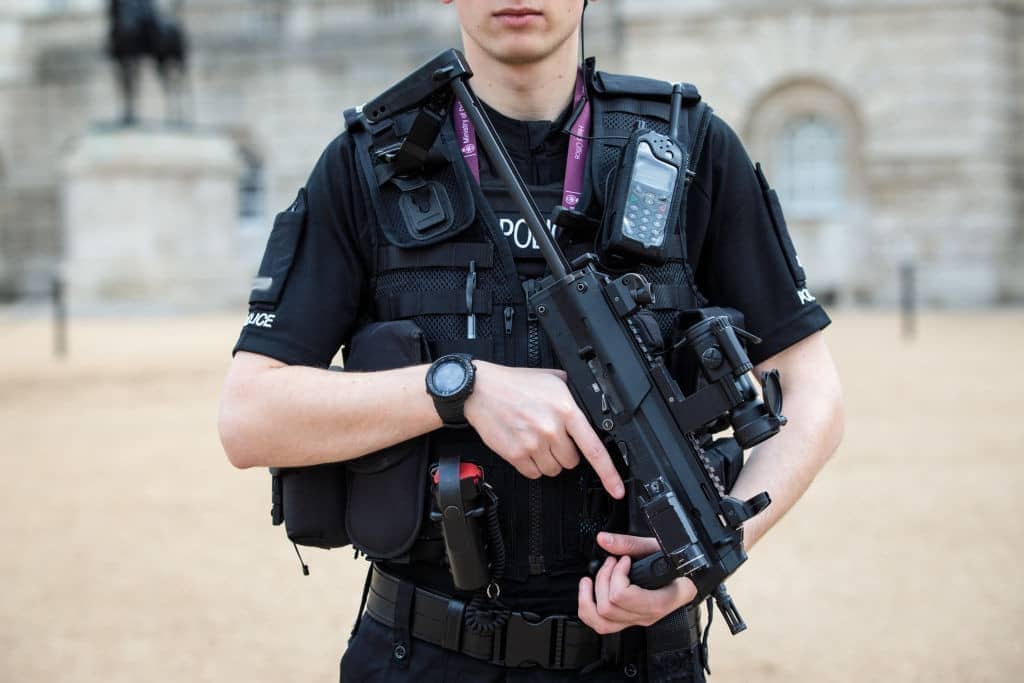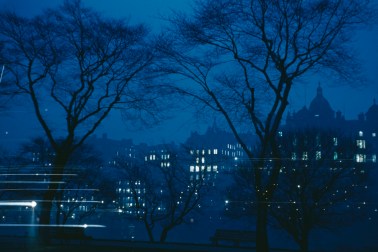At 2.30 in the afternoon on September 22, 1999, Harry Stanley left the Alexandra pub in Hackney, east London, with a blue plastic bag containing a table leg that had been repaired by his brother. Unbeknown to Stanley, someone in the pub had called the police to report ‘an Irishman with a gun wrapped in a bag’ and minutes later, 100 yards from his home, two armed officers arrived. They challenged the 46-year-old (who was in fact Scottish) before firing two shots. He died instantly.
Five years later, a jury at the second inquest to be held into Stanley’s death returned a verdict of ‘unlawful killing’ and the officers involved, Inspector Neil Sharman and PC Kevin Fagan, were suspended from duty. The decision, by Scotland Yard, sparked outrage among their colleagues and around 100 of them withdrew from armed duties in protest.
The sense of anger which was felt then, by members of the Metropolitan Police’s specialist firearms command, is present again now, following the death of Chris Kaba earlier this month. The 24-year-old rapper was at the wheel of an Audi when he was hit by a single bullet fired by an armed officer through the front windscreen. According to the Independent Office for Police Conduct (IOPC), which is investigating the case, police were trying to stop and contain the car after a police camera matched the number plate to a vehicle linked to a previous firearms incident. No weapon was subsequently found.
The circumstances of the two police shootings are very different – but the reasons for the police disquiet are the same. Like Sharman and Fagan, the officer who fired the shot that killed Kaba has been suspended by his force.
Firearms officers know that they will have to justify every shot
Police officers who carry guns do a difficult and dangerous job. In England and Wales, they volunteer for the role and are not paid extra for it. The selection process involves an initial assessment, to filter out those who are deemed unsuitable, followed by a rigorous training course lasting ten to 12 weeks. Only half of those who start the course pass; for those who do there is compulsory refresher training every couple of months.
Partly as a result of the stringent selection and training requirements the pool of eligible firearms officers is relatively small. At the end of March, there were 6,192 ‘operationally deployable’ armed police across the 43 forces, 4.3 per cent of the total officer workforce. The number has been falling for three years.
The specialist and intensive nature of the armed role contributes to a strong sense of camaraderie among firearms officers; they tend to be close-knit teams, highly professional, loyal to their colleagues, proud of what they do. They contend that they act with restraint – and statistics lend support to that claim. In the 12 months to the end of March, for example, they were involved in 18,259 firearms operations but fired their weapons only four times.
Of course, the consequences of a firearms discharge, which is usually a split-second decision taken at a moment of high stress, can be devastating – and firearms officers are acutely aware of that. They know that they will therefore have to justify every shot. And if a shot causes serious injury or death the scrutiny will be fierce, long-lasting and, possibly, public. Investigation and transparency are accepted as a necessary part of their job. ‘All they want,’ one policing source told me, ‘is to be treated fairly’.
In their eyes, however, the suspension of the officer who shot Chris Kaba does not amount to fair treatment. They believe it is premature and shows a lack of respect for the unique and challenging job that armed officers do. There is a stigma attached to the term ‘suspended from duty’, they say, even though it is not meant to imply guilt or wrongdoing, and a public perception of ‘no smoke without fire’ which could last months or even years. They also question the Met’s reasons for its decision.
Assistant Commissioner Amanda Pearson said among the factors the force had taken into account was the IOPC’s announcement that its inquiry had become a ‘homicide investigation’ – meaning that potential offences of murder and manslaughter are under consideration. Pearson also cited the ‘significant impact on public confidence’ as a reason for suspending the officer. One police insider, furious about the move, put it another way, saying it had been done to ‘appease the public’ following high-profile demonstrations and pressure from Kaba’s family, lawyers and campaigners. Deborah Coles, executive director at the charity, Inquest, was one of many who had demanded that the officer be removed from public-facing duties. ‘There is rightly anger and frustration at yet another Black man whose life has been cut short after the use of lethal force by police,’ she said.
In 2004, when Inspector Sharman and PC Fagan were suspended, sparking an unofficial ‘strike’ by a quarter of London’s armed officers, the then Commissioner, Sir John Stevens, and his deputy, Sir Ian Blair, led negotiations to resolve the dispute. After two months, they agreed the pair could return to work, on restricted duties, even though the Crown Prosecution Service was still considering whether charges should be brought. The following year the ‘unlawful killing’ verdict was overturned by the High Court and replaced by an ‘open’ verdict; the officers were later told they would not face any criminal or disciplinary charges.
Despite feeling that they have been let down by their Scotland Yard superiors over the latest suspension, there are no signs yet that the Met’s armed officers are about to hand in their firearms authorisation permits as they did 18 years ago. With the lying-in-state of the Queen and her funeral to come, a sense of duty prevails.
Much may depend, however, on how long the IOPC inquiry takes. A number of previous cases became bogged down in protracted procedural issues, investigative failings and police obstruction, with prosecution and misconduct decisions delayed, testing the patience of all of those affected.
There is no reason why that should happen this time. Footage from a police helicopter and cameras worn by officers at the scene should be readily available, along with accounts by witnesses and those involved; the IOPC is more experienced at conducting sensitive investigations than it was before; co-operation with the police has improved. Their investigation must of course be thorough, but it must also be transparent – and timely. That, above all, is what everyone should be pushing for.





